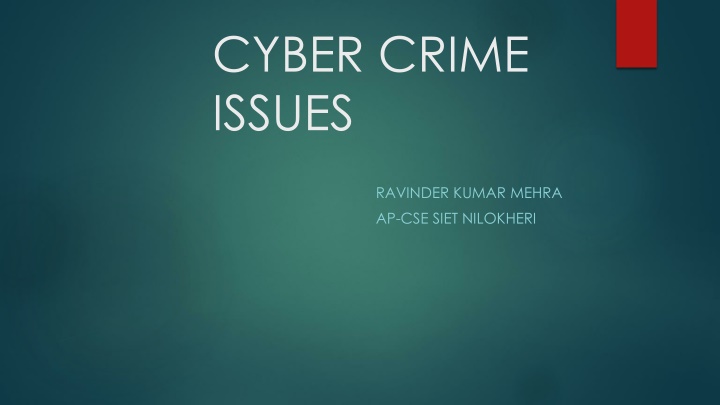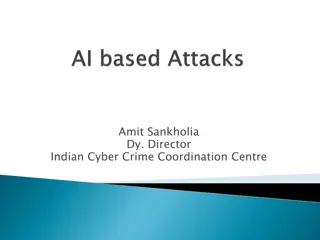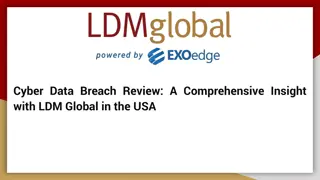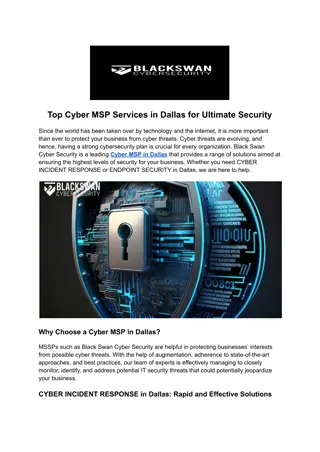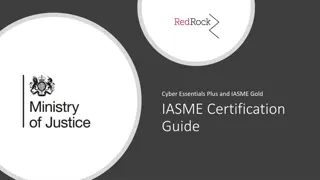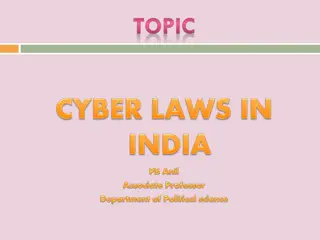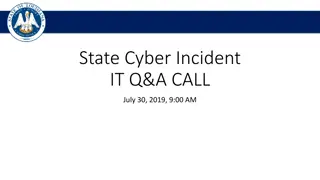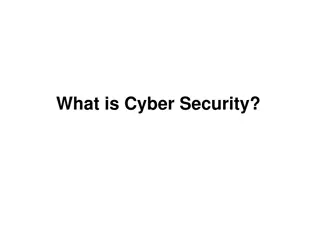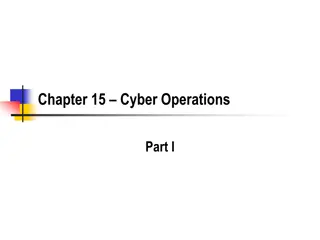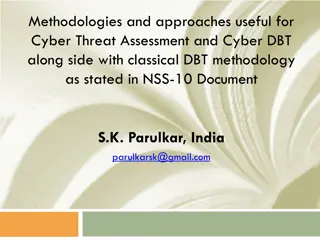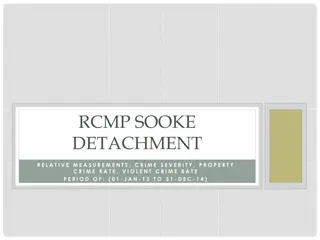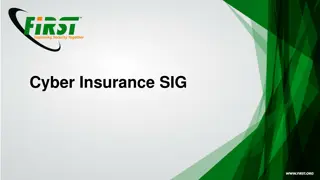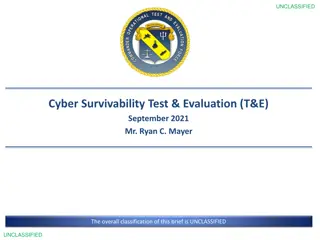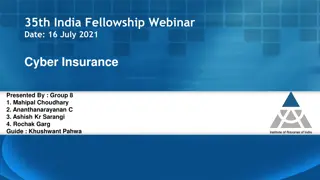Cyber Crime Issues and Prevention
Unauthorized access to computer systems poses threats such as data breaches and cyber crimes. Learn about the implications of unauthorized access, the Anti-Phishing Act, and how to prevent it through secure password practices.
Download Presentation

Please find below an Image/Link to download the presentation.
The content on the website is provided AS IS for your information and personal use only. It may not be sold, licensed, or shared on other websites without obtaining consent from the author.If you encounter any issues during the download, it is possible that the publisher has removed the file from their server.
You are allowed to download the files provided on this website for personal or commercial use, subject to the condition that they are used lawfully. All files are the property of their respective owners.
The content on the website is provided AS IS for your information and personal use only. It may not be sold, licensed, or shared on other websites without obtaining consent from the author.
E N D
Presentation Transcript
CYBER CRIME ISSUES RAVINDER KUMAR MEHRA AP-CSE SIET NILOKHERI
Unauthorized access Unauthorized access means trespassing into a computer without consent, and retrieving data, storing data, communicating with, intercepting, or changing data or software. Unauthorized access is when someone gains access to a website, program, server, service, or other system using someone else's account or other methods. For example, if someone kept guessing a password or username for an account that was not theirs until they gained access, it is considered unauthorized access. Under the IT act, it is a crime to knowingly and without permission: Alter, damage, delete, destroy or otherwise use any data , computer system or network in order to defraud, extort or wrongfully control or obtain money, property or data. Take copies, or make use of data or documentation.
Cont. use or cause to be used computer services. disrupt or causes to disrupt of computer services or causes the denial of services to an authorized user. provide or assists in providing a means of accessing a computer, computer system or computer network. introduce any computer contaminant (such as a virus). use the Internet domain name or profile of another individual, corporation, or entity in connection to send electronic mail messages or posts that damages or causes damage to a computer, data, or network.
The Anti-Phishing Act, include specific laws aimed at using email or web pages to steal personal information. Personal information is defined as: Social security number. Driver s license number. Bank account number. Credit card or debit card number. Personal identification number (PIN). Automated or electronic signature. Unique biometric data. Account password. Any other piece of information that can be used to access an individual s financial accounts or to obtain goods or services.
How to prevent unauthorized computer access Passwords Make sure a password is set for your computer's operating system. The best way to keep someone out of your accounts and personal information is to not let them on your machine in the first place. You can always create additional accounts for guests. Helpful password tips Never keep a default password. Passwords such as "password," "root," "admin," or no password at all allow easy access to your computer or Internet accounts. Change passwords often. We recommend at least once every few months. Create a BIOS password. When creating a password, add numbers or other characters to the password to make it more difficult to guess; for example, 1mypassword23!. Do not use sticky notes around your computer to write down passwords. Instead, use a password manager.
Get a hardware or software firewall We highly recommend all computer users have a firewall solution. There are two ways a firewall can protect your computer and network. Hardware firewall - A hardware firewall is a physical device that connects to your network. Often, many users who have a home network can use their network router as a firewall solution. Software firewall - A software firewall is a software program you install on your computer to helps protect it from unauthorized incoming and outgoing data. A software firewall will protect only the computer on which it has been installed. Additionally, many antivirus scanners include a software firewall. Microsoft Windows firewall If you are running any version of Microsoft Windows after XP, there is a firewall built into your operating system.
Operating system and software patches and updates There is no such thing as perfect software. Programs often have compatibility issues or vulnerabilities that compromise your computer's security. Software patches, updates, and drivers are made available, often for free, to consumers to help keep a software program and operating systems running properly and securely. A program with no method of checking for updates requires you to verify the program is up-to-date. Often this can be done by visiting the website of the developer who created the program. A listing of third-party companies and links to each of their pages is on our third-party support page.
Malware protection Trojans, viruses, spyware, and other malware can monitor your computer and log keystrokes to capture sensitive data, such as passwords and credit card information. help protect your computer installing antivirus and anti-spyware protection programs. To from these threats, we suggest
Run system scans to check for vulnerabilities Several online sites can help check computers for potential threats. Vulnerability scanning, also commonly known as vuln scan,' is an automated process of proactively identifying network, application, and security vulnerabilities. Vulnerability scanning is typically performed by the IT department of an organization or a third-party security service provider. This scan is also performed by attackers who try to find points of entry into your network. The scanning process includes detecting and classifying system weaknesses in networks, communications equipment, and computers. In addition to identifying security holes, the vulnerability scans also predict how effective countermeasures are in case of a threat or attack. A vulnerability scanning service uses piece of software running from the standpoint of the person or organization inspecting the attack surface in question.
Know how to handle e-mail Today, e-mail is one of the most popular features on the Internet. Being able to identify threats sent through e-mail can help keep your computer and your information safe. Below are some of the most common threats you may encounter while using e-mail. Attachments - Never open or run e-mail attachments from addresses with which you are not familiar. Viruses, spyware, and other malware are commonly distributed through e- mails that have attachments. For example, an e-mail may want you to open an attachment of claiming to be a funny video when it's a virus. Phishing - An e-mail phish is a message appearing to be from an official company (e.g., your bank), asking you to log onto the site to check your account settings. However, the web page links in the phishing e-mail are sites set up to steal passwords, credit card information, social security information, and other confidential information.
Alternative browser Before the release of Microsoft Windows XP SP2 and Internet Explorer 7.0, Microsoft Internet Explorer was notorious for security and spyware related issues. Although it has improved since then, we still highly recommend considering an alternative browser, such as Mozilla Firefox or Google Chrome.
Unauthorized Access to Computer System There are two types of cases related to unauthorized access to computer system, which are Intrusion into a computer system and Internet or online account-take-over . Examples Hacker intrudes into the computer systems of some companies in order to illegally alter the contents of the websites. Hacker intrudes into the computer system of a specific company in order to use the Internet long-distance calls. As a result, the victim company suffers loss from huge amount of bill. Victims logged into bogus/ phishing websites via phishing emails, and were asked to enter their email addresses and passwords, which could result in the following scams: Email Scam (Corporate Level) After understanding the business transactions between the victim and the client, the fraudster use fictitious emails to induce the victim to make remittances to some local and overseas designated bank accounts. Email Scam (Personal Level) After hacking into a personal email account, the fraudster sent out deceptive emails to the victim s relatives and friends on the contact list. The email defrauded that the sender had encountered an accident overseas and urgently needed money. The victim was requested to remit money to the fraudster s account as a matter of emergency.
Computer intrusions or attacks? Computer intrusions occur when someone tries to gain access to any part of your computer system. Computer intruders or hackers typically use automated computer programs when they try to compromise a computer s security. There are several ways an intruder can try to gain access to your computer. They can: Access your computer to view, change, or delete information on your computer. Crash or slow down your computer. Access your private data by examining the files on your system. Use your computer to access other computers on the Internet.
